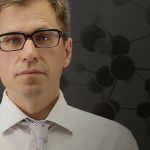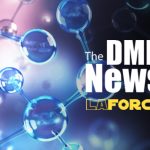
Cells Restoring dystrophin in DMD
We’ve set a goal for ourselves of informing you about new treatments for Duchenne muscular dystrophy (DMD). Here are some very promising results: new research conducted by Dr. Maria Siemionow, professor of orthopedic surgery in the UIC College of Medicine. Good reading and thank you for sharing these articles within the DMD community.
What is the role of dystrophin in Duchenne muscular dystrophy (DMD)?
Duchenne muscular dystrophy (DMD) is a degenerative muscle disease caused by a genetic mutation. Duchenne muscular dystrophy (DMD)—for which no treatment is currently available—directly affects the muscles. The simplest way to explain this disease is that a genetic mutation (i.e. a genetic defect) affects the gene responsible for the production of dystrophin. This genetic defect prevents the gene from producing dystrophin. In the absence of dystrophin, the muscles degenerate and become atrophied.
What are “chimeric cells”?
These cells, called “chimeric cells,” are made by combining a normal donor cell containing a functional copy of the dystrophin gene with a cell from a recipient with the disease. These cells were able to significantly improve muscle function when implanted into the muscles of a mouse model of the disease.
Research with promising results
Dr. Maria Siemionow, professor of orthopedic surgery in the UIC College of Medicine, and her team used “chimeric cells” in a study of model mice with DMD. The results are excellent: the boosted dystrophin levels by 37 percent and improved muscle function when implanted into the muscles of a mouse model of Duchenne muscular dystrophy. These cells remained viable and produced dystrophin for 30 days.
“Our results point to the long-term survival of these cells and helps establish the use of chimeric cells as a novel promising potential therapy for patients with Duchenne muscular dystrophy,” Siemionow said.
Clinical trials for on humans forthcoming
Dr. Maria Siemionow also mentioned that her team is looking forward to clinical trials in humans shortly. She went on to say:
“We are restoring dystrophin in such a way that the recipient won’t need to take anti-rejection therapy because the implanted chimeric cells can evade the recipient’s immune system. In traditional stem cell therapy, the implanted cells are 100 percent ‘other’ and anti-rejection medicine is needed in order to prevent the host immune system from destroying those foreign cells.”
How do chimeric cells work on humans?
If these cells were to be used to treat a patient with Duchenne muscular dystrophy, then normal muscle cells from the father or a close relative of the recipient would be fused with muscle cells from the patient. In contrast, chimeric cells can trick the recipient’s immune system into ignoring them. In lab tests, it was possible to bring the chimeric cells to express dystrophin.
Maria and Kris Siemionow, who are mother and son, have recently launched a company to develop their chimeric cells into a therapy to treat Duchenne muscular dystrophy called Dystrogen Therapeutics. The development of such a therapy is captivating, and its evolution deserves to be followed.
External links and special thanks to:
Dystrogen.com: Clinical stage regenerative medicine company
Scicasts.com: Human “Chimeric” Cells Restore Crucial Protein in Duchenne Muscular Dystrophy



